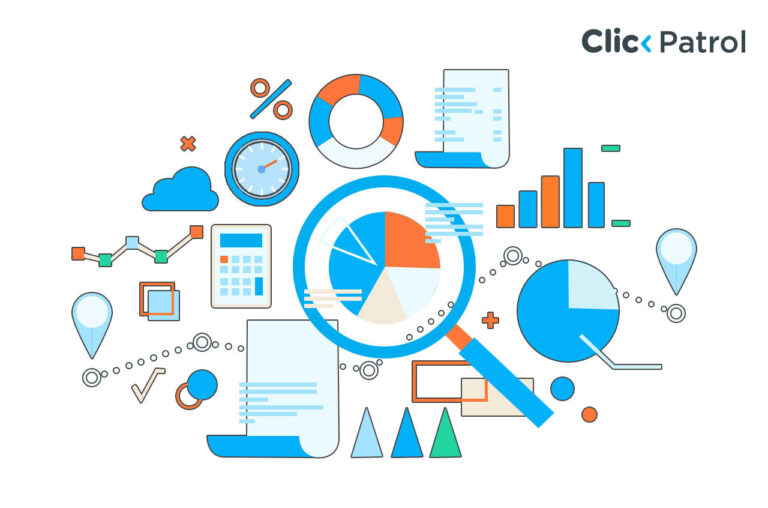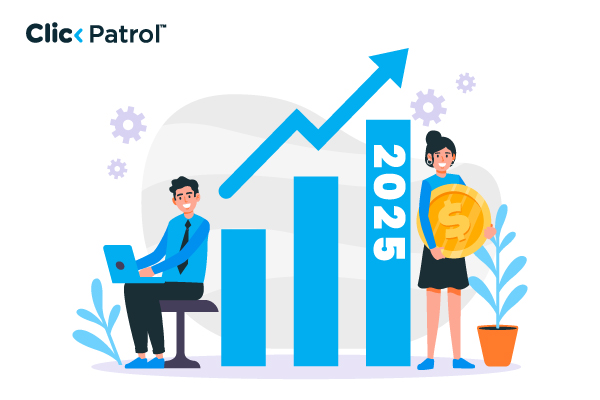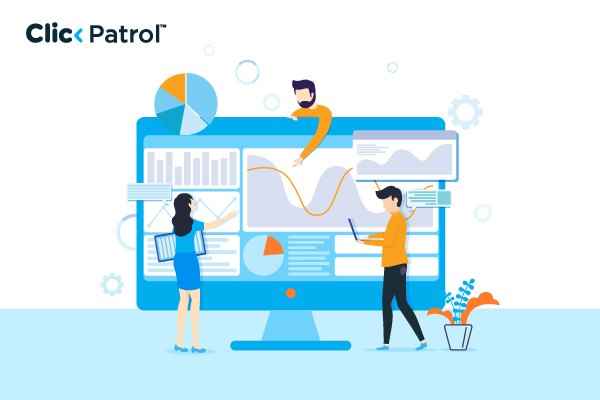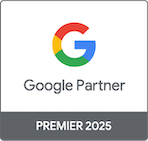
Mastering Google Ads auction insights: Boost ROI with competitive data
Abisola Tanzako | Aug 13, 2025

Table of Contents
- What are Google Ads auction insights?
- Key takeaways from Google Ads auction insights
- How to use Google Ads auction insights for a competitive PPC strategy
- Advanced strategies for leveraging Google Ads auction insights
- Common pitfalls and how to avoid them
- Maximizing PPC success with Google Ads auction insights
- FAQs
WordStream says top advertisers increase ROI by up to 30% when using competitor insights effectively. Pay-per-click (PPC) advertising is essential for companies that target a specific audience and, in turn, increase conversion rates.
One of the most useful tools in Google’s PPC universe is the AdWords Auction Insights report, which gives advertisers important insights into their competitive environment.
Using Auction Insights, advertisers can get meaningful data for strategic optimization, competitive advantage, and higher profitability.
This guide explains key Google Ads auction insights metrics, how to interpret them, and how to use them to outpace competitors.
What are Google Ads auction insights?
Google Ads auction insights is a Google suite that allows advertisers to compare their campaigns to similar campaigns in the same ad auctions. These metrics include:
- Impression share: The percentage of impressions that get served to people because of your ads.
- Average position: The standard placing of your ads within ad auctions (it’s good to recall that the relative importance of this metric is less than what it used to be due to Google’s move to ad rank systems).
- Overlap rate: You do not necessarily care whether your competitor’s ad is number one or number two; all you care about is how often your competitor’s ad appears to be shown when you are there.
- Position above rate: The speed at which an ad by your competitor will outrank your ads.
- Top of page rate: The number of times you or a competitor’s ad appears at the top of the search page.
- Outranking share: The part of the auctions where your ad has a higher position than a competitor’s or is displayed when yours is not.
Key takeaways from Google Ads auction insights
Auction Insights is a powerful Google Ads report that helps you understand how your ads perform compared to competitors bidding on the exact keywords. Here are the key takeaways:
1. Competitor analysis
- Identify your main competitors bidding on the exact keywords.
- See how often their ads appear in the same auctions as yours.
2. Impression share
- Shows the percentage of impressions your ad received vs. the total available.
- A low impression share may suggest budget or bid constraints.
3. Overlap rate
- It tells you how often another advertiser’s ad appeared at the same auction as yours.
- A high overlap means they’re directly competing with you.
4. Position above rate
- It shows how often a competitor’s ad appeared above yours when both ads were shown.
- Helps assess who’s winning the top ad positions.
5. Top of page and absolute top of page rates
- Indicates how often your ads appear at the top of the results page or in the first position.
- Helpful in understanding visibility and competitiveness.
How to use Google Ads auction insights for a competitive PPC strategy
They include:
Step 1: Accessing auction insights
To access auction insights, follow these steps:
- Log in to your Google Ads account.
- Evaluate your campaigns, ad groups, or keyword choices.
- Choose the particular campaign, ad group, or keyword that you are going to analyze.
- To access Google Ads auction insights, click the link in the left-hand dropdown, or if the link is not available, you may use the “More” dropdown.
- Choose the time frame and the metrics you want to be analyzed.
Step 2: Interpreting key metrics
Each metric in Auction Insights gives a unique insight:
- Impression share: An impression share percentage of 30% or less could indicate that your budget and ad rank may not be high enough to maintain visibility. Aim for 60-80% impression share in your key campaigns, according to Statista.
- Overlap rate: If you see an overlap rate approaching 70% with a competitor, you have a similar audience targeting.
- Outranking share: You are placing second under 50% against a major, which might indicate that your bids need to be increased or that your Quality Score should be improved.
- Top-of-page rate: Those at the top of the page are more likely to receive clicks than those further down. A bottom top-of-page rate (e.g., 20%) usually means that changing bids or optimizing ads may be required.
Step 3: Taking action
Tune your approach, using Auction Insights data:
- Increase bids for high-value keywords: A loss in outranking share for your essential keywords may require you to adjust your bid or improve the relevance of your ad.
- Improve quality score: By improving your ad copy, optimizing your landing page experience, and choosing better words, you can increase your ad rank without increasing your budget.
- Expand negative keywords: If you see excessive overlap, it may indicate that your ads are pulling irrelevant visitors. Use negative keywords to better define your target audience.
- Monitor new competitors: When you enter a new domain through your report, assess their selling and sharpen your strategy to avoid losing your market.
Advanced strategies for leveraging Google Ads auction insights
The strategies include:
1. Segmenting data for deeper insights: Auction Insights provides a range of segmentation options that involve time, device, or campaign type. For example:
- Time-based analysis: Identify seasonal patterns by looking at impression shares during events like Black Friday.
- Device-based analysis: If your mobile top-of-page rate trails the market, it can help you optimize your mobile landing pages or increase your mobile bidding strategy.
- Campaign-type analysis: In shopping campaigns, focus on product keywords that lack impression share to meet your goals.
2. Benchmarking against industry standards: Compare your metrics against standard industry figures to determine your performance level. For instance:
- Retail: Average impression share is 65%.
- Finance: High competition leads to high top-of-page rates, with a high percentage of campaigns experiencing more than 50% top-of-page rates.
- Travel: Due to the targeted similar audience segments, travel advertisers experience an overlap rate of up to 80%.
3. Synthesizing Google Ads auction insights data with other analytical solutions: Use Google Ads auction insights together with other tools, such as:
- Google Keyword Planner: Compete on top-opportunity keywords by studying the places where competitors are investing their budgets.
- Google Analytics: Connect Link Auction Insights to your conversion data to decide where to spend the campaign budget.
- Third-Party Tools (e.g., SEMrush, Ahrefs): Analyze competitors’ ads and the website elements to understand their adverts.
4. Responding to competitor moves: When the outranking share of a competitor increases, it usually means that they increased the bid prices or improved the Quality Score, respectively. Counter this by:
- A/B testing Ad copy: Change your ad copy by flipping headlines or CTAs to increase CTR.
- Enhancing landing pages: Optimize your site’s performance and enhance the user experience to increase your quality score.
- Exploring new audiences: Use audience targeting approaches (in-market and affinity) to attract new users.
Common pitfalls and how to avoid them
The common pitfalls and how to avoid them include:
- Focusing solely on impression share: There are often massive budget pressures to pursue 100% impression share. Make prioritizing the need for the right balance of visibility and cost-effectiveness.
- Ignoring small competitors: Aggressiveness sometimes characterizes the competitive strategies of smaller websites. Monitor them to avoid surprises.
- Over-reliance on bidding: Increasing bids without prior optimization of Quality Score generally results in increased costs and reduced return on ad spend.
- Neglecting long-term trends: Regularly follow Monitor Auction Insights to get a long-term perspective to identify recurring patterns, rather than relying on isolated reports.
Maximizing PPC success with Google Ads auction insights
Google Ads auction insights are much more than just a report. It provides a strategic guideline needed for success in competitive PPC environments.
It enables you to learn more about your placement at auctions, monitor rival strategies, and make changes to your campaigns to increase your visibility, steal better ad placements, and increase your returns on investment.
Given that Statista predicts digital advertising will soar to a jaw-dropping $870.8 billion in the next decade, tools such as Auction Insights will continue to be essential for success.
The use of this tool today will give an upper hand to the competitors and bring huge gains.
FAQs
Q. 1 What is the Google Ads Auction Insights report?
The Google Ads Auction Insights report compares your campaign performance with other advertisers participating in the same auctions.
Q. 2 How often should I check Auction Insights?
Monitor auction insights weekly or monthly, depending on campaign size. High-budget or holiday campaigns are best monitored weekly to catch trends early. As published in a 2023 Forbes article, frequent data review increases campaign performance by up to 30%.
Q. 3 Does Auction Insights report competitors’ bids or budgets?
No, Auction Insights does not report exact budgets or bids. It provides relative performance metrics like impression share and outranking share from which to make inferences about competitive activity.
Q. 4 Why is my impression share low?
Low impression share typically results from low budgets, low quality scores, or high competition. Statista finds that 65% of advertisers with low impression share accomplish this by raising bids and optimizing their ads.





